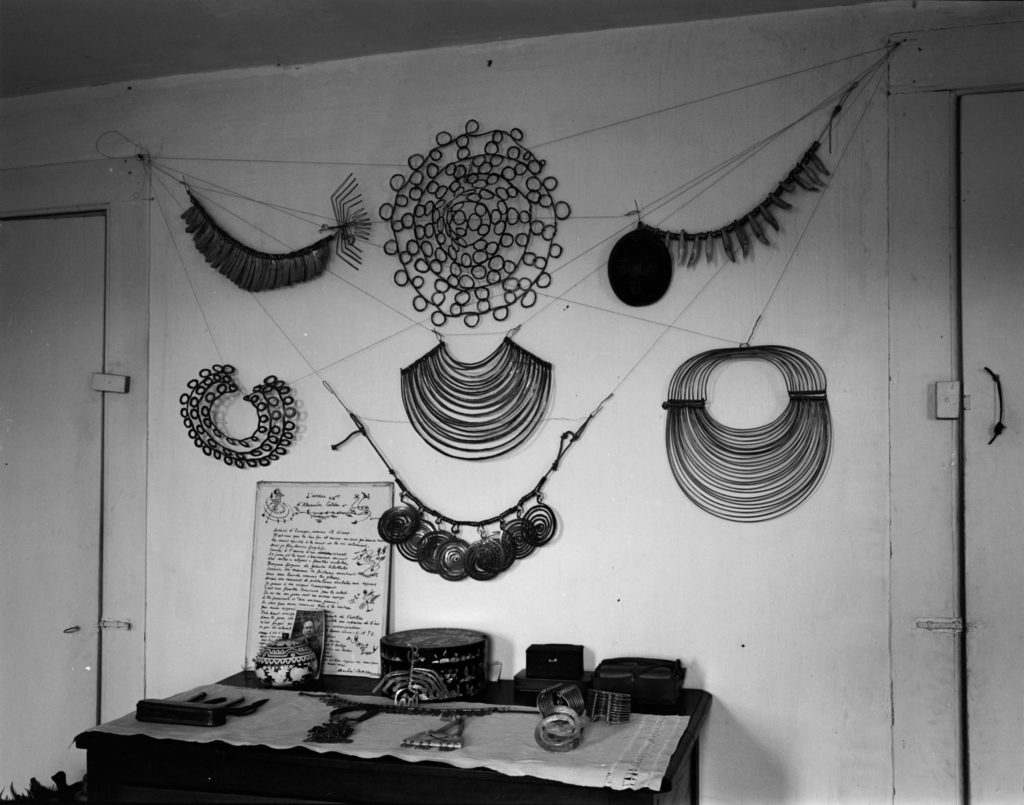



So once on board the De Grasse, I started walking the deck. I overtook an elderly man and a young lady. I could only see them from the back, so I reversed my steps the better to see them face on. Upon coming abreast of them the next time around, I said, “Good evening!” And the man said to his daughter, “There is one of them already!”
He was Edward Holton James, my future father-in-law.
She was Louisa.
Her father had just taken her to Europe to mix with the young intellectual elite. All she met were concierges, doormen, cab drivers—and finally me.[1]
Soon after their chance encounter aboard the De Grasse Louisa James received a bracelet made from a continuous brass wire hammered flat spelling out “Medusa.” My grandfather nicknamed her “Medusa” because of the wild ringleted hair she could not tame on board the ship.[2]
Born into an intellectual family, Louisa was brought up in proper Boston society by an English nurse and a French governess. Her parents were outwardly conformist (he a James and she a Cushing),[3] though her father was a Quixotic fighter for social justice.[4] In 1930, Louisa wrote to her mother:
To me Sandy is a real person which seems to be a rare thing. He appreciates and enjoys the things in life that most people haven’t the sense even to notice … He has tremendous originality, imagination and humor which appeal to me very much and which make life colorful and worthwhile.[5]




That year, Calder made her an engagement ring:
I had known a little jeweler in Paris, Bucci, and he had helped me make a gold ring—forerunner of an array of family jewelry—with a spiral on top and a helix for the finger. I thought this would do for a wedding ring. But Louisa merely called this one her ‘engagement ring’ and we had to … purchase a wedding ring for two dollars.[6]
After their marriage in 1931, Louisa became less concerned with social conventions and lived a simple bohemian life with Calder. He would often observe her at work making bread or hooking rugs and go out to the studio to devise a tool to simplify her task. He made hundreds of gifts for her: sculptures, drawings, household inventions, and untold numbers of jewelry that she wore in her daily life. Many of them were created for a specific garment: buttons for a certain coat, a buckle for her black wool cape, etc. As seen in this photograph by Herbert Matter (c. 1942), her dressing bureau was a very private moment in their home where Louisa displayed her Calder jewelry along with an ode to Calder’s studio by André Masson. When I was a child, her bureau always seemed a mysterious altar to me.
The following pages illustrate Calder’s devotion to Louisa through a selection of jewelry he made for her spanning their life together. Many were inscribed for wedding anniversaries (17 January), birthdays (19 February), and other memorable occasions …
The Metropolitan Museum of Art, New York. Calder Jewelry. 8 December 2008–1 March 2009. Originated from the Norton Museum of Art, West Palm Beach, Florida.
Solo ExhibitionAddison Gallery of American Art, Andover, Massachusetts. 17 Mobiles by Alexander Calder. Exhibition catalogue. 1943.
Alexander Calder, Statement
Solo Exhibition CatalogueAlmine Rech Gallery, New York. Calder and Picasso. Exhibition catalogue. 2016.
Robert Slifkin, The Mobile Line
Susan Braeuer Dam, Liberating Lines
Jordana Mendelson, Picasso, Miró, and Calder at the 1937 Spanish Pavilion in Paris
Group Exhibition CataloguePace Gallery, New York, and Acquavella Galleries Inc., New York. Calder/Miró: Constellations. Exhibition catalogue. New York: Rizzoli, 2017. Boxed set includes three volumes: Calder: Constellations, Miró: Constellations, and Calder/Miró: Chronology and Correspondence.
Alexander S. C. Rower, Deployed Nuclei
Group Exhibition CatalogueDenver Botanic Gardens. Calder: Monumental. Exhibition catalogue. 2017.
Alexander S. C. Rower, Approximations of Perfection
Solo Exhibition Catalogue